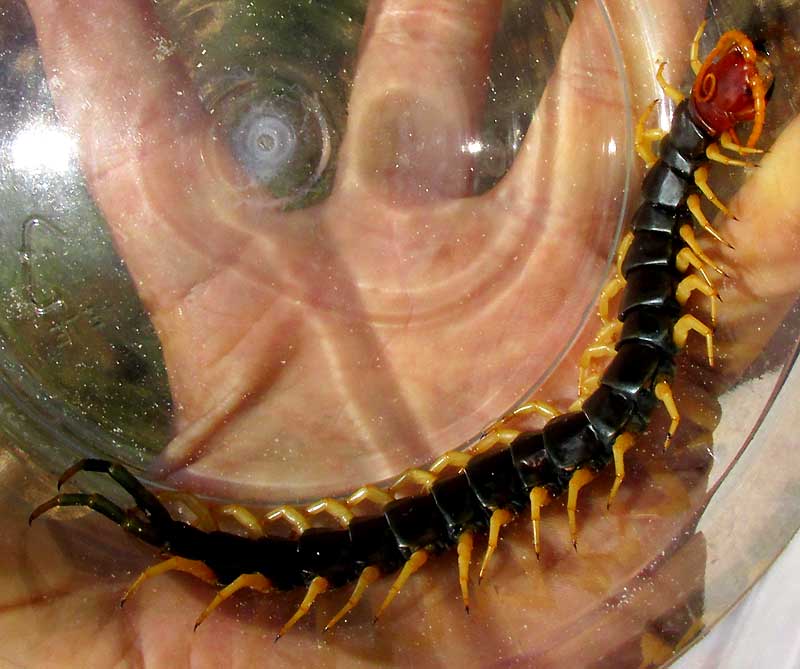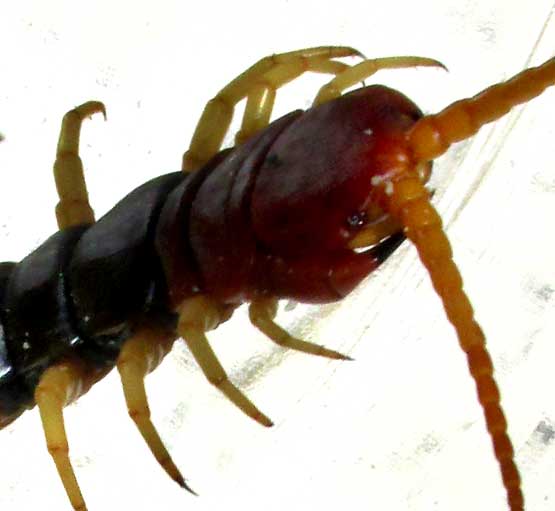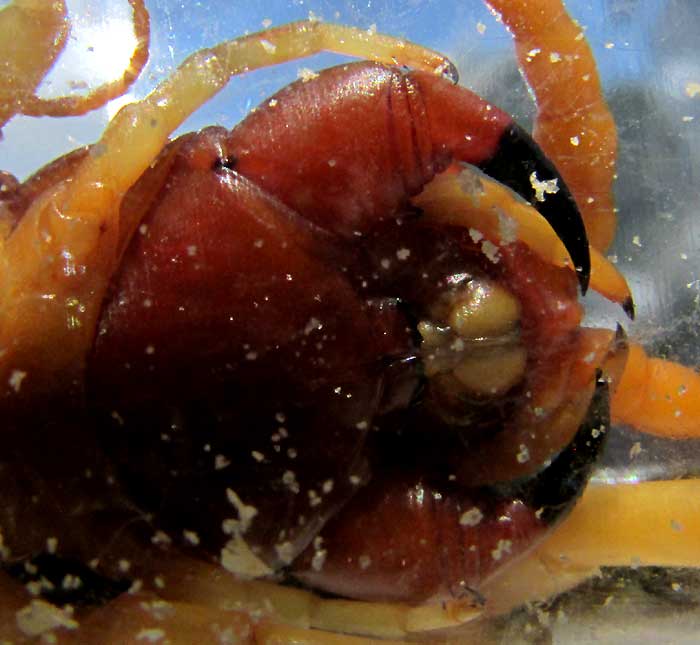Excerpts from Jim Conrad's
Naturalist Newsletter
Issued on September 5, 2020, from the valley of the Dry Frio River in northern Uvalde County, southwestern Texas, on the southern border of the Edwards Plateau, USA
GIANT DESERT CENTIPEDE
Fred came asking if I wanted to see a huge centipede his cats had cornered in his house. When I saw it I grabbed an empty gallon jar, and below you can see the critter in the jar's bottom.

This is the famous Giant Desert Centipede, aslo known as the Giant or Texas, and by other names. It's SCOLOPENDRA HEROS, the largest of North American centipede species, found from southwestern Missouri to Arizona south through arid northern Mexico. I read that in the wild it gets up to 8inches long. It does like deserts, but also occurs in rocky woodland areas like ours. It tends to remain underground on warm days, emerging in cloudy weather, and this one had come out on a cloudy day.
Mainly the species is a nocturnal predator, hunting just abou anything from small invertebrates to small rodents, reptiles and amphibians. It's been observed grabbing small flying insects in the air. And it has venom to subdue it prey. Below is a close-up of the head from above:

The black, dangerous-looking items at the end of the body, at the lower left, have a sensory, grasping, or defensive function, but aren't dangeorus. On the head you can see the eyes, consisting of what looks like a cluster of ocelli, which are very simple eyes, sometimes called eyespots. The black-tipped, thick-based and red, dangerous-looking items between the ocelli and the first cream-colored legs are "maxillipede," sometime called poison claws, which are modified legs serving as mouthparts. The maxillipede's thickened base contains a poison gland with a tube passing to the fang's tip. When the maxillipede bites into prey, venom can be injected. Below the ocelli and on the inner side of the maxillipede is a cream-colored "second maxilla, useful for food manipulation. Below is a shot through the jar, showing what's below the head

The pale, kidney-shaped, granular-surfaced items in the center of the claws are mouthparts called mandibles, used for crushing prey into edible pieces. Other things are there that don't show up well.
I turned the critter loose beneath the platform on which my tent is set up.